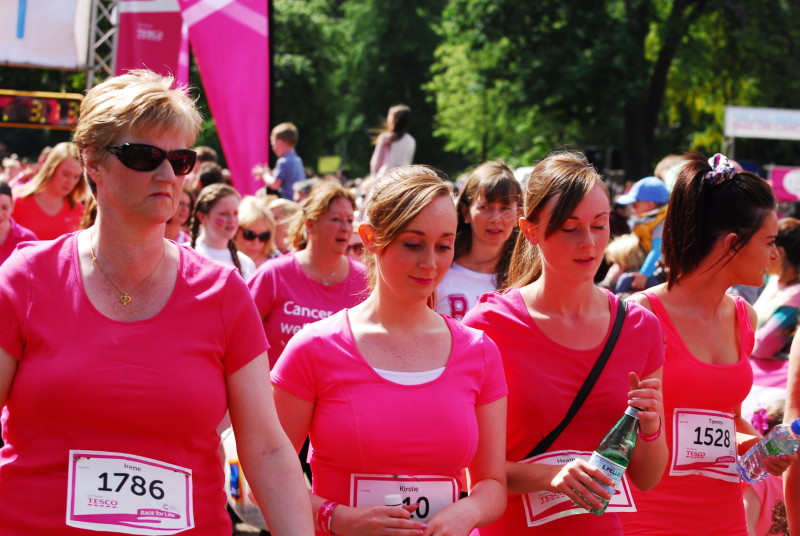Editor's note: This perspective comes from Gabrielle Guthrie. She is co- founder of the women-centered design start up, Moxxly, which is developing the world's first 'smart breast pump'. Gabrielle has a masters in design from Stanford University and lives and works in San Francisco.
Women’s health is often assumed to be similar to men's health. Or not considered at all.
That needs to change.
In 1956, a clinical trial of the drug Thalidomide ran in the United States involving 875 people. Thalidomide was touted as a wonder drug for insomnia, headaches, and morning sickness. Pregnant women were among the participants. Within five years, Thalidomide was pulled from the market under pressure from the public after it caused malformation of the limbs in 10,000 children and killed an additional 2,000.
Following the Thalidomide scare, the industry still considers women to be a higher risk – and therefore a more expensive – participant group. So without requirements in place for industry to include a balanced representation of women, study participants skew heavily male.
So now, what is known to be true for men has been assumed to be true for everyone.
This assumption is especially dangerous with heart disease, the number one cause of death for women in the United States. Despite its fatality rate – or perhaps because of it - men comprise 76 percent of all heart-related study participants, even after efforts from the FDA Office of Women’s Health has worked to promote gender and racial diversity in the face of industry’s biases toward white, male enrollment in medical studies.
So What’s the Big Deal?
The problem occurs when insights from research are applied universally.
That left arm tingle we all associate with a classic sign of a heart attack?
Turns out that’s actually a classic sign of a heart attack in a man. A woman having a heart attack can present much different symptoms, such as fatigue, dizziness, or nausea.
“Many, many women died because the way we’re taught to recognize a heart attack is based on the symptoms men present,” says Dr. Alicia Carrasco, an internist affiliated with University of California, San Francisco (UCSF) Medical Center.
Studies with a gender imbalance can have a double blind affect: Patients may not realize the severity of their symptoms and doctors are more likely to misdiagnose them, with potentially fatal consequences.
Heart disease research is not an isolated instance. Non-smoking women for example, are more likely than men to develop lung cancer and we don’t know why. Women are also at a greater risk for depression.
Breast cancer research stands as a strong exception to this rule, with $6 billion raised every year. From 2011 to 2013 the National Cancer Institute allocated more than double the amount of funding for breast cancer research than for prostate cancer research, even though one in 31 women will die of breast cancer and one in 38 men will die of prostate cancer.
But as the NFL goes pink for all of October, heart disease continues to kill one in three American women, according to the American Heart Association. In other words women in the U.S. are ten times more likely to die of heart disease than of breast cancer.
Yet cardiovascular disease is still considered a man’s disease.
Can New Digital Health Tools Change the Ratio?
This lack of education and understanding of women’s health spreads across the health landscape from research studies to new digital health products.
Apple’s oversight in not including menstruation cycles in its HealthKit service’s otherwise comprehensive metrics stands as a recent example. Despite the flak it received in the press, the latest software update still doesn’t offer the one health metric many women of childbearing age care most about: Period-tracking.
Experts say these types of examples are a frequent oversight, as both the technology and health fields are dominated by men.
Which means health issues that affect women are often either overlooked, in the case of HealthKit, or they miss the mark. Most women’s health apps still rely on and reinforce stereotypes of femininity that many women don’t identify with. Yes I’m talking pinks and flowers for everything from period trackers to breastfeeding.
“It may not even be a conscious thing. There are just more male doctors," said Dr. Carrasco.
"In order for this to change, we need more women in positions of power."
And engineers, entrepreneurs and venture capitalists.
In my opinion, we’re still in the stage of women’s digital health that is operating on stereotypes and assumptions.
But digital health offers a new opportunity of understanding beyond the white, male patient.
"We don’t have to rely on scientific studies and pharmaceutical companies to advance female health when we can collect vast quantities of valuable data on our own,” writes Ida Tin, chief executive of Clue, an app that is focused on fertility.
But in order to be successful, women’s digital health products have to be designed for and with women in mind.

